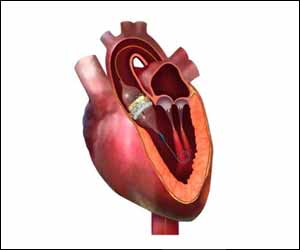- Home
- Editorial
- News
- Practice Guidelines
- Anesthesiology Guidelines
- Cancer Guidelines
- Cardiac Sciences Guidelines
- Critical Care Guidelines
- Dentistry Guidelines
- Dermatology Guidelines
- Diabetes and Endo Guidelines
- Diagnostics Guidelines
- ENT Guidelines
- Featured Practice Guidelines
- Gastroenterology Guidelines
- Geriatrics Guidelines
- Medicine Guidelines
- Nephrology Guidelines
- Neurosciences Guidelines
- Obs and Gynae Guidelines
- Ophthalmology Guidelines
- Orthopaedics Guidelines
- Paediatrics Guidelines
- Psychiatry Guidelines
- Pulmonology Guidelines
- Radiology Guidelines
- Surgery Guidelines
- Urology Guidelines
TAVR is a valid alternative to SAVR in patients with low surgical risk

USA: Transcatheter aortic valve replacement (TAVR) should be the preferred option over surgical aortic valve replacement (SAVR) in low-risk patients with severe aortic stenosis (AS), according to a recently published study in the Journal of the American College of Cardiology.
According to the study, the use of TAVR in low-risk patients lowered the risk of all-cause death and cardiovascular death at 1 year compared with SAVR use.
The researchers searched online databases for studies that compared TAVR versus SAVR in low-risk patients from inception to March 20, 2019. The primary outcome was all-cause death at 1 year. 4 RCTs including 2887 patients at low surgical risk were included.
Also Read: Scientists develop novel technique that prevents coronary obstruction from TAVR: JACC
Key findings include:
- Compared with SAVR, TAVR was associated with a significantly lower risk of all-cause death (2.1% vs. 3.5%) and cardiovascular death (1.6% vs. 2.9%) at 1 year.
- Rates of new/worsening atrial fibrillation, life-threatening/disabling bleeding, and acute kidney injury stage 2/3 were lower, whereas those of permanent pacemaker implantation and moderate/severe paravalvular leak were higher after TAVR versus SAVR.
- There were no significant differences between TAVR versus SAVR for major vascular complications, endocarditis, aortic valve re-intervention, and New York Heart Association functional class ≥II.
Also Read: RAS inhibition after TAVR may improve clinical outcomes: JACC
"While valve-in-valve TAVR is an option for failing bioprosthetic valves, it may increase the risk of patient–prosthesis mismatch and may prevent critical access to the coronary arteries later on, if used for transcatheter valves with supra-annular positioned leaflets. As to the use of TAVR in bicuspid valves, outcomes have improved but potential long-term issues, such as more paravalvular leak and aneurysm of the ascending aorta, need investigation before using TAVR in patients with a long life expectancy, Lars Sondergaard, University of Copenhagen, Denmark, and editorialists wrote in an accompanying editorial.
"On the basis of new evidence on aortic valve replacement in low-risk patients, it may be argued that TAVR has been proven as a valid alternative to SAVR across all risk profiles.
To read the complete study log on to DOI: 10.1016/j.jacc.2019.06.076

Disclaimer: This site is primarily intended for healthcare professionals. Any content/information on this website does not replace the advice of medical and/or health professionals and should not be construed as medical/diagnostic advice/endorsement or prescription. Use of this site is subject to our terms of use, privacy policy, advertisement policy. © 2020 Minerva Medical Treatment Pvt Ltd